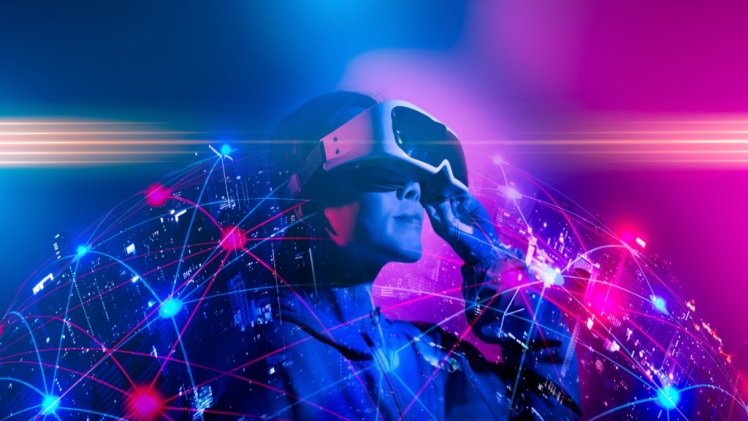In an era defined by rapid technological advancements and changing consumer behaviors, the entertainment industry stands at the crossroads of innovation and tradition. As we witness the convergence of various mediums and the emergence of new platforms, the landscape of entertainment is undergoing a paradigm shift. This article explores the trends and transformations redefining the entertainment industry, from the way content is created and consumed to the evolving role of technology in shaping the future of entertainment.
I. Streaming Services and the Digital Revolution:
One of the most significant transformations in the entertainment industry is the rise of streaming services. Platforms like Netflix, Hulu, and Disney+ have disrupted traditional distribution models, offering viewers the flexibility to consume content on-demand. This shift from linear television to digital streaming has not only altered audience viewing habits but has also created a fertile ground for diverse, original content production. The binge-watching culture that accompanies these platforms has fundamentally changed the way stories are told and consumed.
II. The Proliferation of Original Content:
The dominance of streaming services has fueled an insatiable demand for original content. This trend has given rise to a golden age of television and digital series, with high-quality storytelling, intricate character development, and cinematic production values becoming the norm. Streaming platforms invest heavily in creating exclusive content, attracting top talent and providing a platform for diverse voices and narratives that may not have found space in traditional media.
III. User-Generated Content and Social Media:
The democratization of content creation is another transformative trend reshaping the entertainment landscape. Social media platforms like YouTube, TikTok, and Instagram have empowered individuals to become creators, blurring the lines between amateur and professional content. User-generated content spans a wide spectrum, from short-form videos and vlogs to music covers and DIY productions. This trend not only gives rise to new forms of entertainment but also challenges traditional gatekeeping structures.
IV. Virtual and Augmented Reality:
As technology continues to advance, virtual and augmented reality are emerging as powerful tools in the entertainment industry. Virtual reality (VR) offers immersive experiences, allowing users to step into fictional worlds or participate in interactive narratives. Augmented reality (AR), on the other hand, enhances the real world with digital overlays, creating new possibilities for gaming, live events, and interactive storytelling. These technologies are poised to revolutionize the way audiences engage with content, providing a more personalized and immersive experience.
V. Interactive and Gamified Experiences:
The gamification of entertainment is on the rise, with interactive narratives and video games gaining widespread popularity. From choose-your-own-adventure narratives to expansive open-world gaming experiences, audiences are increasingly drawn to content that allows them to actively shape the story. This trend blurs the lines between traditional storytelling and gaming, offering a more participatory form of entertainment that caters to a diverse range of preferences.
VI. Rise of Podcasts and Audio Entertainment:
Audio entertainment, particularly podcasts, has experienced a renaissance in recent years. The format’s accessibility and portability make it a preferred choice for on-the-go audiences. Podcasts cover a wide range of topics, from true crime and storytelling to news, comedy, and education. The intimacy of the audio medium allows for a deep connection between content creators and listeners, providing a unique and immersive experience.
VII. Niche and Specialty Streaming Services:
The era of one-size-fits-all entertainment is giving way to a proliferation of niche and specialty streaming services. Whether catering to specific genres, subcultures, or languages, these platforms offer curated content that caters to more targeted audiences. This trend reflects a growing recognition of the diversity of consumer preferences and the importance of providing specialized content to meet those needs.
VIII. Challenges and Opportunities:
While these trends signal exciting transformations, they also pose challenges for traditional players in the entertainment industry. Adapting to the digital landscape, navigating issues of intellectual property in the age of user-generated content, and staying relevant in an oversaturated market are ongoing concerns. However, these challenges also present opportunities for collaboration, innovation, and the exploration of new revenue streams.
Conclusion:
Entertainment, in all its forms, is undergoing a profound transformation fueled by technological innovation and evolving consumer behaviors. From the dominance of streaming services to the democratization of content creation and the immersive experiences offered by virtual and augmented reality, the industry is in a state of constant flux. As we navigate these trends and transformations, one thing remains clear: the future of entertainment is dynamic, diverse, and filled with opportunities for creators, consumers, and industry stakeholders alike. The journey of entertainment is an ongoing narrative, and its redefinition is a testament to the industry’s resilience and adaptability in the face of change.

